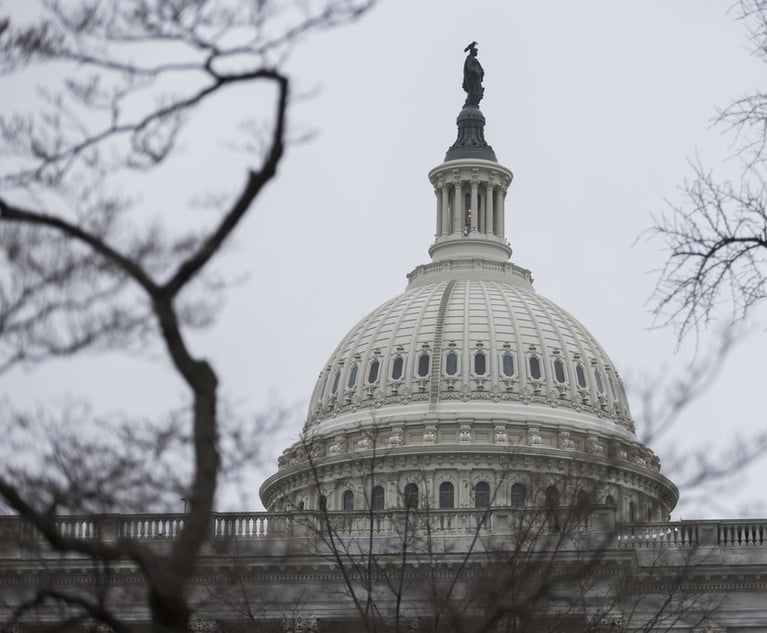There are signs of new activity in the cases pending before the U.S. Supreme Court that ask the question of whether the prohibition of “discrimination because of sex” in Title VII of the 1964 Civil Rights Act covers situations in which a transgender woman or openly gay man is fired.
Media outlets, including the Wall Street Journal, the American Prospect and National Review, are running pieces that not only pick up the arguments where they left off when the high court heard the case in October but also suggest that at least one conservative justice may be on the cusp of ruling for the plaintiffs. In response, conservative advocates seem to be taking to the internet to try to persuade justices not to slide into what amounts to political incorrectness on the right.
The reason? Textualism, the philosophy promoted so strongly by the late Justice Antonin Scalia that Justice Elena Kagan once remarked that “we’re all textualists now.” The problem with it, from a conservative outcome-driven perspective, is that textualism offers Kagan a path toward persuading Chief Justice John Roberts and Justice Neil Gorsuch that an honest reading of Title VII supports the plaintiffs’ argument that it’s discriminatory if the basis for someone getting fired is deviation from the expectations associated with his or her sex.
For example, in one of the pending cases, Aimee Stephens was fired from her job of six years when her employer learned that the person he knew as male would transition to what Stephens experienced as her true gender. The legal question presented is whether her dismissal was because of her sex. She was the same person, holding the same job. One thing changed: her sex.
The defendant and the U.S. Department of Justice (which switched its position after the Trump administration took office) argue that “sex” was understood in 1964 to include only policies that harmed women more than men (or vice versa) of the sort that then excluded women from many jobs. Nonetheless, even they are forced to concede that Title VII must extend to situations that logically fall within its scope—regardless of the cultural norms in 1964. An example is sexual harassment, which is not mentioned in Title VII but which, 20 years later, the high court found was covered. And in 1964, sexual harassment, the term had not yet been invented, was indistinguishable from a day at the office.
In 1998, Scalia wrote an opinion interpreting Title VII to prohibit harassment of men by other men. The year before that ruling, the justice published a book in which he argued that the meaning of a law should not be determined by what a legislature meant it to cover but by the text of the law. “A text should not be construed strictly [or] leniently,” he wrote. “It should be construed to contain all that it fairly means.”
Since the Supreme Court heard arguments in the current cases, I have come across additional evidence demonstrating that, while transgender plaintiffs may have been less common in the early 1960s than today, their cases nonetheless fall within the scope of what a reasonable understanding of sex discrimination was when Title VII was enacted.
Working at the John F. Kennedy Library archives in Boston, researching early second wave feminist legal arguments, I read the transcript of an April 1962 meeting of the President’s Commission on the Status of Women, chaired by Rep. Edith Green, D-Oregon. The topic was legislation to guarantee equal pay for women. Various individuals at the meeting expressed frustration at the resistance in Congress to the principle of equal pay for equal work.
Green responded by saying, in effect, if you think that’s an example of irrational sex discrimination, get a load of this:
“One—the final—most ridiculous matter that came to my attention during all of the time we have had this legislation before us was a case [that] happened in London. A girl by the name of Diana decided she would change her sex and became Jonathan. And she worked for the British Ministry. She put an ad in the paper notifying the general public that she was no longer Diana but Jonathan such-and-such,” Green said.
“When she reported for work the next week for the British Ministry, she automatically had a pay increase, because she was now a man instead of a woman, even though she was doing the identical work she was doing the week before. … The ultimate in discrimination,” Green continued.
In the early 1960s, Diana became Jonathan and got a raise. In 2013, William became Aimee and got fired. Green—one of the members of Congress who voted two years after this meeting to enact Title VII—nailed it: the ultimate in sex discrimination. No one at the meeting disagreed.
I do not know whether or how many other members of Congress knew of the Diana to Jonathan story when they voted for Title VII in 1964. What matters is how reasonable people perceived that situation. The reaction of Green—a schoolteacher, wife and mother before she served two decades in the House of Representatives—should be a reminder to today’s justices of what the common sense conclusion would be—both then and now.
Firing people because of who they are is precisely what Title VII was enacted to prevent. That is just as true for Aimee Stephens and other trans people trying to keep their jobs as it is for anyone else. We rely on courts to see through bias and apply the law. It is up to the Supreme Court to do that in the Stephens case.


 U.S. Supreme Court building, Washington, D.C.
U.S. Supreme Court building, Washington, D.C.





